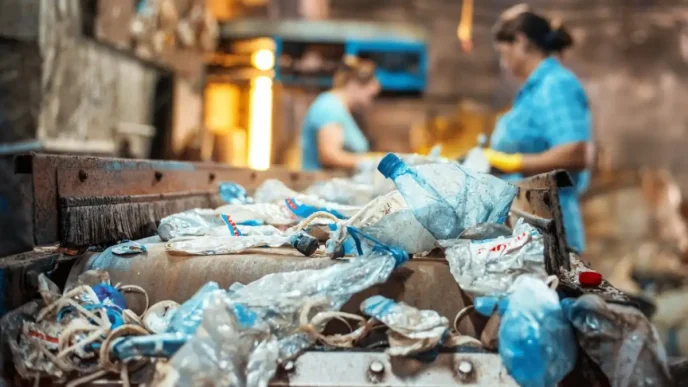A devastating 8.2-magnitude earthquake near Mandalay, Myanmar, on March 28, 2025, has left a significant mark on Thailand, with thousands of government buildings inspected for damage in its wake. The Interior Ministry’s Department of Public Works and Town and Country Planning (DPT) reported that of the 3,375 structures assessed nationwide, 34 have been deemed severely damaged and at risk of collapse, raising urgent questions about public safety and infrastructure resilience in a region prone to seismic activity.
Scale of Damage Across Thailand
The DPT’s comprehensive inspection, conducted in collaboration with the Council of Engineers Thailand, the Engineering Institute of Thailand, the Association of Building Inspectors, and over 100 volunteer engineers from the private sector, paints a stark picture of the earthquake’s impact. In Bangkok, 367 government buildings were evaluated, with 334 found to be safe, 30 sustaining moderate damage but remaining usable, and three buildings—along with one connection bridge—classified as severely damaged and barred from use. In provincial areas, the numbers are more concerning: of 3,008 buildings inspected, 2,796 are safe, 181 have moderate damage, and 31 are severely compromised, posing immediate risks to occupants and passersby.
The concentration of severe damage in provincial regions, where 31 of the 34 critically affected structures are located, highlights disparities in infrastructure standards between urban and rural Thailand. Many of these buildings, some of which serve as local administrative hubs or community centers, may lack the reinforcements needed to withstand such powerful tremors, despite Thailand’s proximity to tectonically active zones like the Sagaing Fault in Myanmar.
Government Response and Public Safety Measures
The Thai government has moved swiftly to address the crisis, with the DPT urging owners of high-rise buildings, hotels, condominiums, dormitories, and shopping malls to hire certified inspectors for damage assessments. This directive aligns with the department’s guidelines for initial structural surveys post-earthquake, emphasizing the need for proactive measures to prevent potential collapses during aftershocks, which remain a concern in the region.
In Bangkok, Governor Chadchart Sittipunt has called on owners of approximately 11,000 buildings to assess their safety, framing the request as a cooperative effort to protect lives. “We must work together to ensure our city remains safe” he said during a press briefing on March 30, 2025, as reported by local outlets. His administration has pledged support for inspections, though the scale of the task—coupled with limited resources—may delay comprehensive evaluations.
Meanwhile, the Thai Public Health Ministry has ordered safety checks for hospitals nationwide, recognizing the critical role these facilities play in disaster response. Additionally, Prime Minister Paetongtarn Shinawatra has personally visited families affected by building collapses, signaling the government’s commitment to addressing both the physical and human toll of the disaster. Aid shipments, including water and medical supplies, have also been dispatched to Myanmar, where the United Nations has reported severe shortages in the earthquake’s epicenter.
Regional Implications and Thailand-Myanmar Relations
The earthquake’s cross-border impact underscores the interconnectedness of Southeast Asia’s seismic risks. Thailand, while not directly on the most active fault lines, frequently experiences the ripple effects of tremors originating in Myanmar, a country situated along the volatile Sagaing Fault. The March 28 quake, one of the strongest in the region in recent years, serves as a grim reminder of the need for coordinated disaster preparedness between neighboring nations.
Thailand’s aid to Myanmar, while humanitarian in nature, also carries geopolitical weight. With Myanmar grappling with internal conflict and political instability since the 2021 military coup, cross-border cooperation on disaster relief could pave the way for dialogue on broader issues. However, Thai officials have emphasized that their focus remains on immediate relief rather than long-term diplomatic gains. “Our priority is to support those in need” a spokesperson for the Foreign Ministry stated, as quoted by Reuters on April 1, 2025.
Challenges in Infrastructure Resilience
The damage to government buildings raises broader questions about Thailand’s infrastructure resilience, particularly in provincial areas where resources for maintenance and retrofitting are often scarce. While Bangkok benefits from stricter building codes and better access to engineering expertise, rural regions face systemic challenges, including outdated structures and limited funding for upgrades. The fact that 31 of the 34 severely damaged buildings are outside the capital suggests a pressing need for national policies to address these disparities.
Experts have long warned that many government buildings in Thailand, some dating back decades, were not designed with seismic activity in mind. “Retrofitting is expensive, but it’s a necessary investment” said Dr. Somchai Wongsawat, a structural engineer with the Engineering Institute of Thailand, in an interview with local media on April 2, 2025. He noted that while Thailand experiences fewer direct earthquakes compared to neighbors like Myanmar or Indonesia, the cumulative impact of secondary shocks can weaken structures over time if not addressed.
The financial burden of repairs is another looming concern. Initial estimates suggest that rebuilding or reinforcing the 34 severely damaged buildings could cost millions of Thai Baht, with one provincial administrative center alone requiring an estimated 3,500,000 Thai Baht (US$98,000) for structural repairs, based on DPT assessments. These figures, while preliminary, underscore the scale of investment needed to ensure public safety—a challenge that may strain local budgets already stretched thin by other priorities.
Public Sentiment and Community Impact
Beyond the numbers, the earthquake’s toll on communities is palpable. In provincial towns where damaged buildings have been cordoned off, residents express frustration over disrupted access to essential services. “This was our main government office for everything—now we don’t know where to go” said a farmer from Chiang Rai, speaking to local reporters on April 1, 2025. Social media platforms, including posts on X, reflect a mix of concern and calls for accountability, with many users questioning why more wasn’t done to prepare for such events given the region’s history of seismic activity.
In Bangkok, the closure of three government buildings and a connection bridge has caused logistical headaches for workers and visitors alike. While the moderate damage to 30 other structures has not necessitated closures, the psychological impact of visible cracks and structural warnings lingers. “I don’t feel safe working here anymore” admitted a civil servant in the capital, echoing a sentiment shared by many in affected areas.
Looking Ahead: A Call for Preparedness
As Thailand navigates the aftermath of the Mandalay earthquake, the focus must shift from immediate response to long-term prevention. The severe damage to 34 government buildings, while a small fraction of the total inspected, serves as a wake-up call for authorities to prioritize seismic retrofitting and stricter building codes across the country. With aftershocks still a possibility, the urgency of these measures cannot be overstated.
At the same time, the human cost of the disaster—felt in disrupted lives and strained communities—reminds us of the stakes involved. As recovery efforts continue, both in Thailand and across the border in Myanmar, the region faces a shared challenge: building back stronger in the face of nature’s unpredictable forces. How Thailand balances these immediate needs with long-term resilience will shape not only its infrastructure but also public trust in the years to come.














